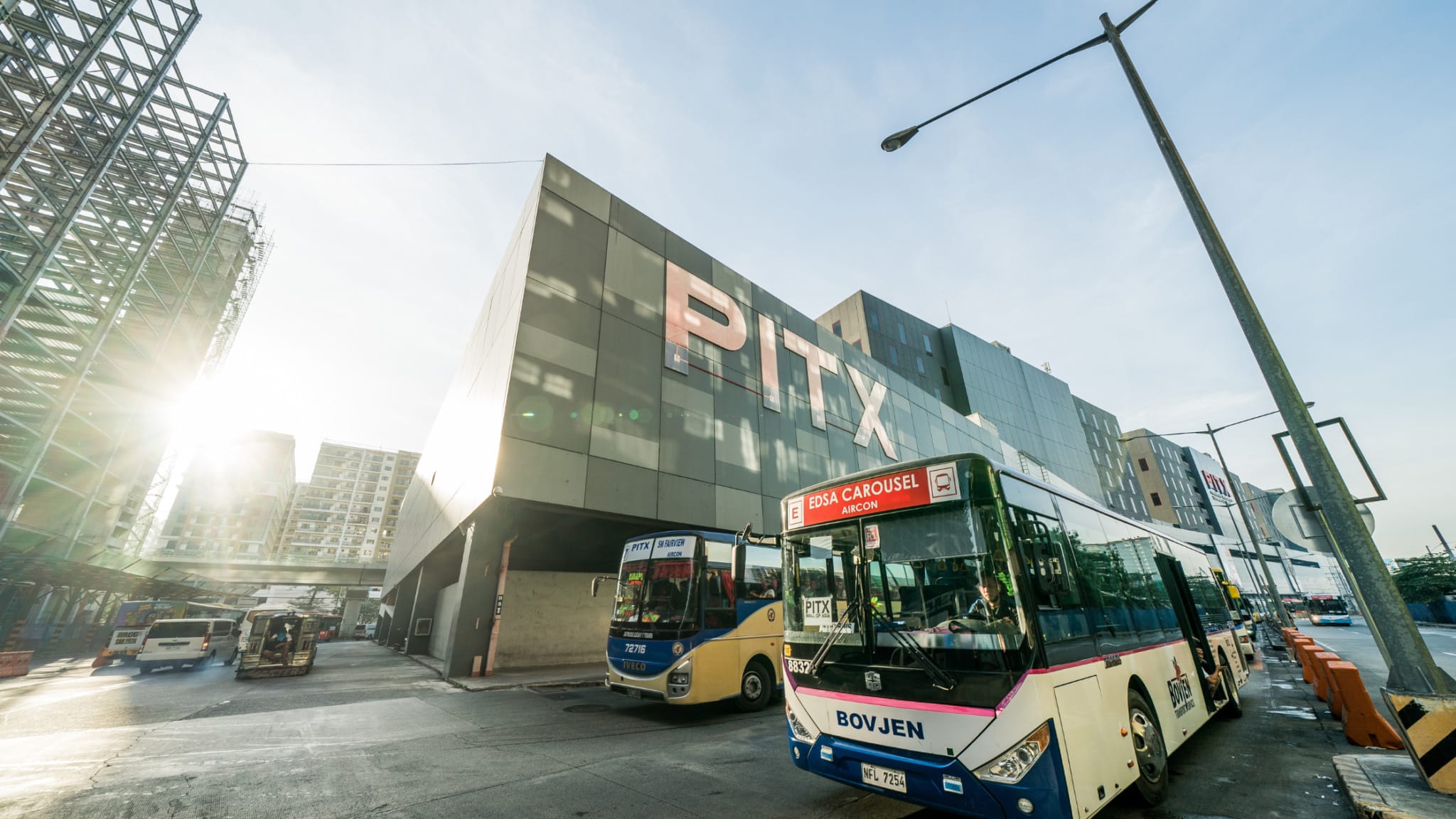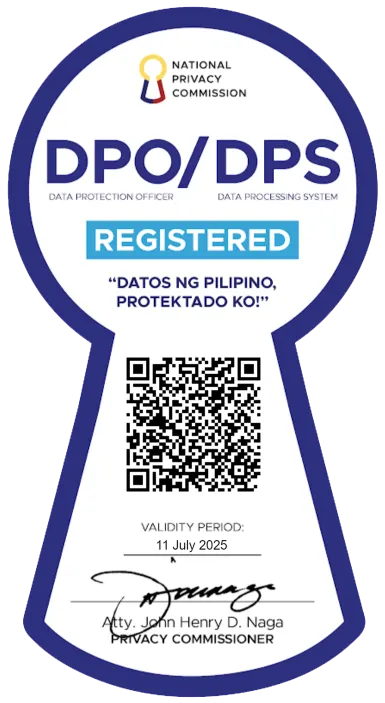If you’ve ever navigated Metro Manila traffic by jeepney or bus, you know how challenging commuting can be: uncertain wait times, crowded stops, and not much in the way of real-time info. Now imagine flipping that experience—enter PITX, the country’s first “land port” that functions more like an airport than a traditional bus terminal.
Strategically located in Parañaque, the PITX terminal connects Metro Manila to the rest of Luzon through a mix of city and provincial buses, jeepneys, UV Express, and more—all under one roof. It even has routes to Visayas and Mindanao.
Whether heading to Laguna for a weekend or planning a smooth trip to Baguio, PITX is the organized, air-conditioned, and digitally updated starting line.
This PITX guide will walk you through the terminal’s transport options, schedules, and fare information—plus tips if traveling through it for the first time.
Table of contents
- What is PITX?
- PITX Transportation Options and Routes
- PITX Schedules and Fare Information
- Tips for First-Time or Regular PITX Commuters
- 1. Travel during off-peak hours
- 2. Arrive at least 30-60 minutes before departure
- 3. Use centralized ticketing counters
- 4. Grab snacks or essentials while you wait
- 5. Stay safe and alert
- 6. Seek accessibility features or assistance
- 7. Check schedules in real time using the PITX app or website
- 8. Plan for transferring transport modes
- Your Smooth Journey Starts Here
What is PITX?
The Parañaque Integrated Terminal Exchange (PITX) is the Philippines’ first intermodal landport, connecting provincial and city commuters through a modern, airport-style transport hub.

When it opened in 2018, PITX marked a turning point in Philippine public transportation. It’s a flagship initiative under the Public-Private Partnership (PPP) program. With a 35-year Build-Operate-Transfer agreement, this government-backed project aims to decongest Metro Manila roads and streamline long-distance travel.
Unlike the usual hectic bus terminals, the PITX terminal delivers a streamlined, commuter-friendly experience. It offers:
- Centralized ticketing booths
- Digital departure boards
- Air-conditioned waiting lounges
- Shops, dining, ATMs, and pay lounges
- PWD-accessible amenities and nursing rooms
- Secure parking for private vehicles
The terminal operates 24/7, and most bus routes are available until 10 PM. A few services, like the EDSA Carousel and Baguio-bound buses, run later.
PITX Transportation Options and Routes
When commuting or traveling in the Philippines, mobility often comes down to one thing: access. PITX fills that gap as a vital transit hub, bridging Metro Manila with the rest of Luzon and beyond.
Whether navigating the city for work or heading out of town, PITX streamlines the journey with a wide range of transport options under one roof. And if you’re living in Meadowcrest, that level of connectivity is a game-changer.
Provincial bus routes
PITX serves as a launch point for trips across Northern and Southern Luzon and beyond. Whether you’re heading home for the weekend or taking a vacation in another province, the terminal offers direct access to:
- Northern Luzon – Baguio, Dagupan, Pangasinan, Pampanga, Tuguegarao
- Southern Luzon – Cavite, Laguna, Batangas, Quezon, Occidental and Oriental Mindoro, Bicol
- Visayas – Bohol, Iloilo, Leyte, Aklan, Samar, Capiz, Biliran
- Mindanao – Davao, Butuan, Cagayan de Oro

City routes: Metro Manila and the EDSA Carousel
If you only need to travel within Metro Manila, you can choose from different modes of transport:
- City buses run to Cubao, Buendia, Ortigas, Ayala, and Quezon Avenue, among others.
- The EDSA Carousel offers 24/7 access from PITX to Monumento.
- Modern and traditional jeepneys connect PITX to areas like Baclaran, Divisoria, Sucat, Mabini, FTI, and Vito Cruz.
- UV Express vans provide direct routes to key commercial hubs within Metro Manila.
- The UBE Express P2P Bus links PITX to NAIA, which is helpful if you’re heading to or from the airport.

Transferring between modes
Thanks to the terminal’s well-organized layout, changing transport types at PITX is intuitive and efficient. Each mode of transport—buses, jeepneys, UV Express, and P2P—has its own clearly marked loading bay, so it is easy to find even during peak hours.
You can also easily find your way using digital monitors and floor signage or asking for assistance at the information counters. For added convenience, you can use the PITX App as a real-time terminal map and trip scheduler. You can check gate numbers, departure times, and last-minute updates. For route or schedule updates, you can check the PITX Facebook page.
Lastly, gate assignments are typically mode- or route-specific. For instance, Gate 10 on the ground floor is for the EDSA Busway, while Gate 5 is for buses going to Batangas, Laguna, and Quezon.
PITX Schedules and Fare Information
Knowing which routes and schedules to take before going to PITX is essential for a smooth trip. This guide has everything to help you plan, including schedules, fares, and other important travel information.
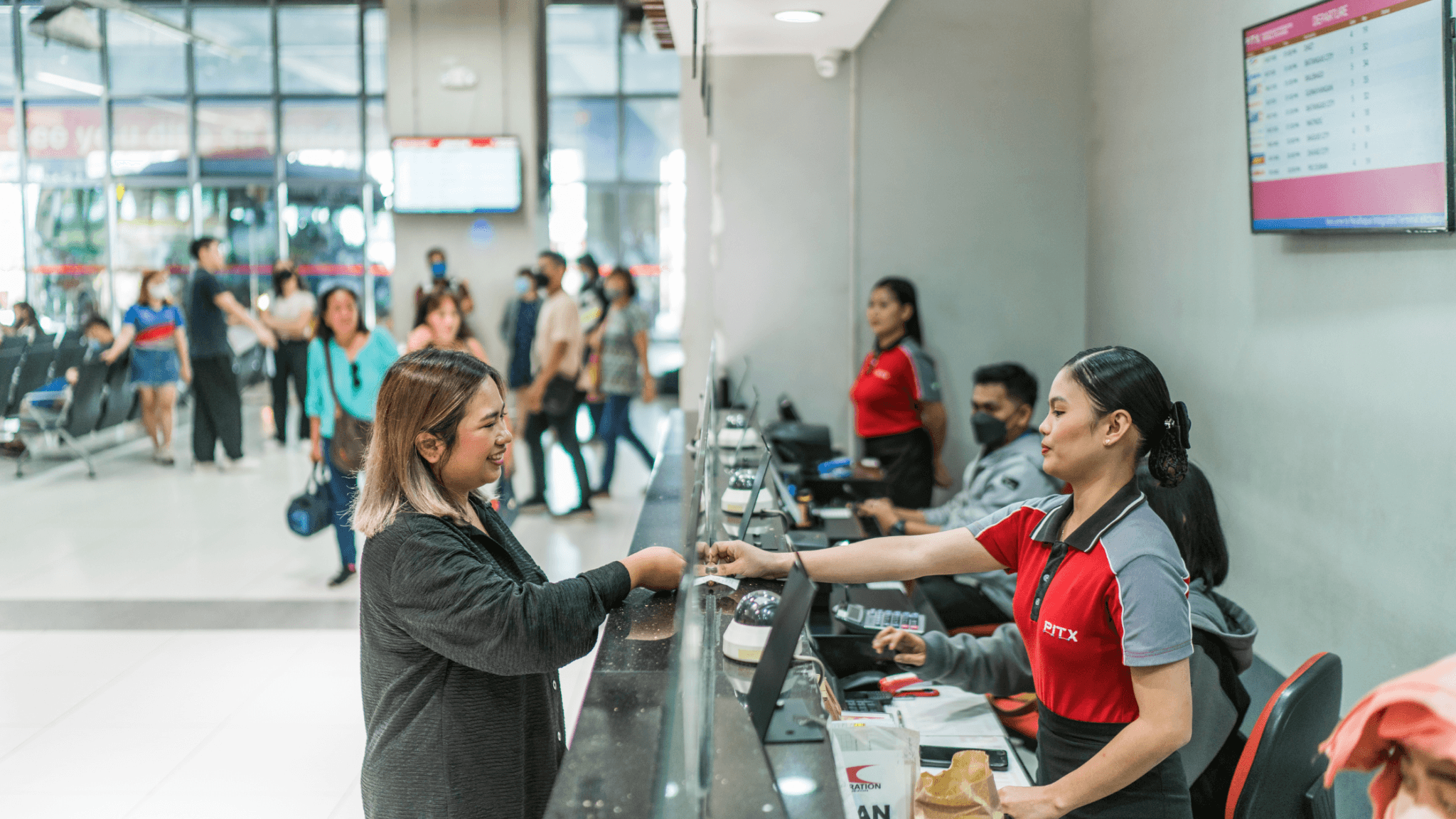
Operating hours and schedule availability
PITX operates 24/7, but transport schedules depend on individual providers. Some buses and modern jeepneys run as early as 4:00 AM and as late as 10:00 PM, though provincial routes—especially long-haul ones—typically have fixed daily departures.
For example, PITX’s schedules going to Laguna vary. You can take a bus to Sta. Cruz as early as 8 AM or a P2P bus to the Santa Rosa Integrated Terminal (SRIT) at 11 AM.
To check specific departure times:
- Look at the digital boards inside the terminal for real-time updates.
- Visit the PITX website or the official Facebook pages of PITX or bus operators (e.g., DLTB, Jam Liner, LLI).
- Many bus companies now allow advance online booking, which often includes estimated departure times and current fares.
Fare ranges
Fares depend on your destination and the type of service (ordinary, air-conditioned, P2P, or executive). Let’s say you’re traveling from PITX to Laguna. You can take a bus to Calamba for around ₱90 or to Sta. Cruz for ₱175.
For longer trips, here are some price estimates (all based on the DLTB online booking platform from PITX):
- Naga City – ₱1,737
- Legazpi City – ₱1,327
- Batangas City – ₱318
- Dagupan – ₱694
- Baguio – ₱1,263
Note: Fare ranges reflect current online listings but may shift based on service type or operator. Always check Ticket booths and operator websites before departure.
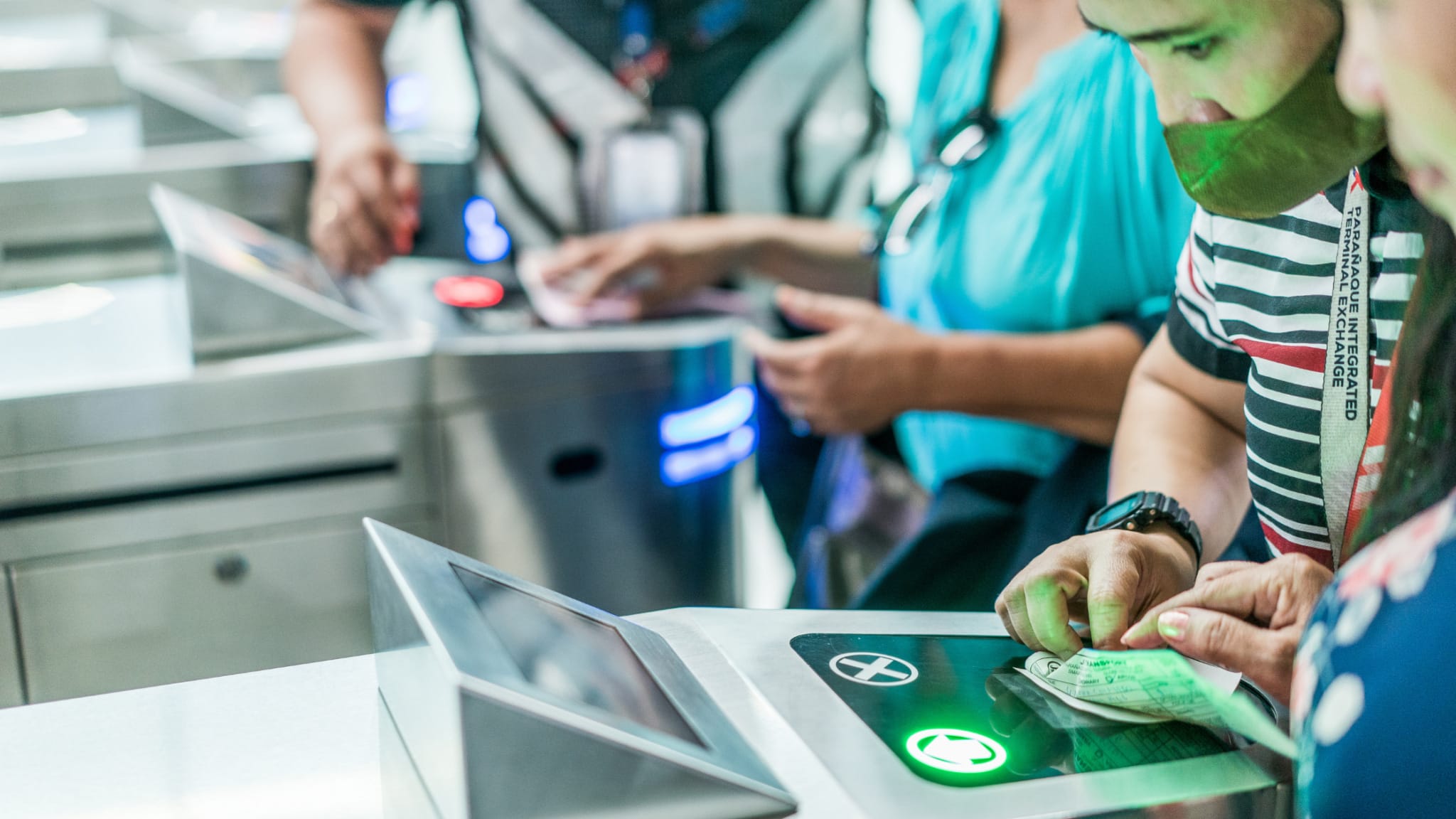
Payment methods
Most buses and jeepneys at PITX accept both cash and Beep cards as payment. If you’re using a Beep card, remember to tap on entry and exit to avoid being charged the full fare. It’s worth noting that not all routes accept Beep cards, so it’s a good idea to have cash on hand as a backup.
Cash also remains widely accepted at food stalls and retail vendors. However, many merchants inside PITX now support digital payments through e-wallets, QR codes, and even online bank transfers. This variety adds more flexibility and speed, especially if you prefer cashless transactions.
Tips for First-Time or Regular PITX Commuters
If you’re traveling via PITX for the first time, you might get overwhelmed by the terminal’s size, the multiple routes, and the vast number of fellow commuters. Where will you buy tickets? Which gate should you go to? Move through the place like a pro with these tips.

1. Travel during off-peak hours
To avoid long lines and crowded waiting areas, aim to travel during off-peak hours. Weekdays from 10 AM to 3 PM and early mornings (before 8:00 AM) are generally less crowded. Weekends and public holidays tend to attract more travelers, so plan ahead if you can.
2. Arrive at least 30-60 minutes before departure
Whether you’re a first-timer or a regular, it’s best to arrive early. Aim for 30-60 minutes before your scheduled departure to have enough time to buy your ticket, check the digital boards for any updates, and settle in. For long-haul trips, consider arriving even earlier, especially if you need to catch a specific bus with a limited schedule.
3. Use centralized ticketing counters
Instead of queuing at individual operator booths, head straight to the centralized ticketing counters at PITX for more organized service. This is especially helpful when you’re unsure about which operator to choose. The counters generally offer tickets for various bus routes going to popular destinations, making your purchase easier and faster.
4. Grab snacks or essentials while you wait
Don’t worry about going hungry while waiting for your bus or jeepney at PITX. With a variety of food outlets available, you can grab a quick bite, enjoy a refreshing drink, or purchase snacks for your trip.
You can have a hearty meal or munch on some snacks from the various diners and food chains at the terminal. You can even buy some pasalubong for your loved ones from PITX.
5. Stay safe and alert
PITX is generally a safe and busy terminal, but it’s always important to stay vigilant. Avoid leaving your bag unattended. Also, don’t rush to board your bus at the last minute. It can cause unnecessary stress and increase your chances of missing your trip.
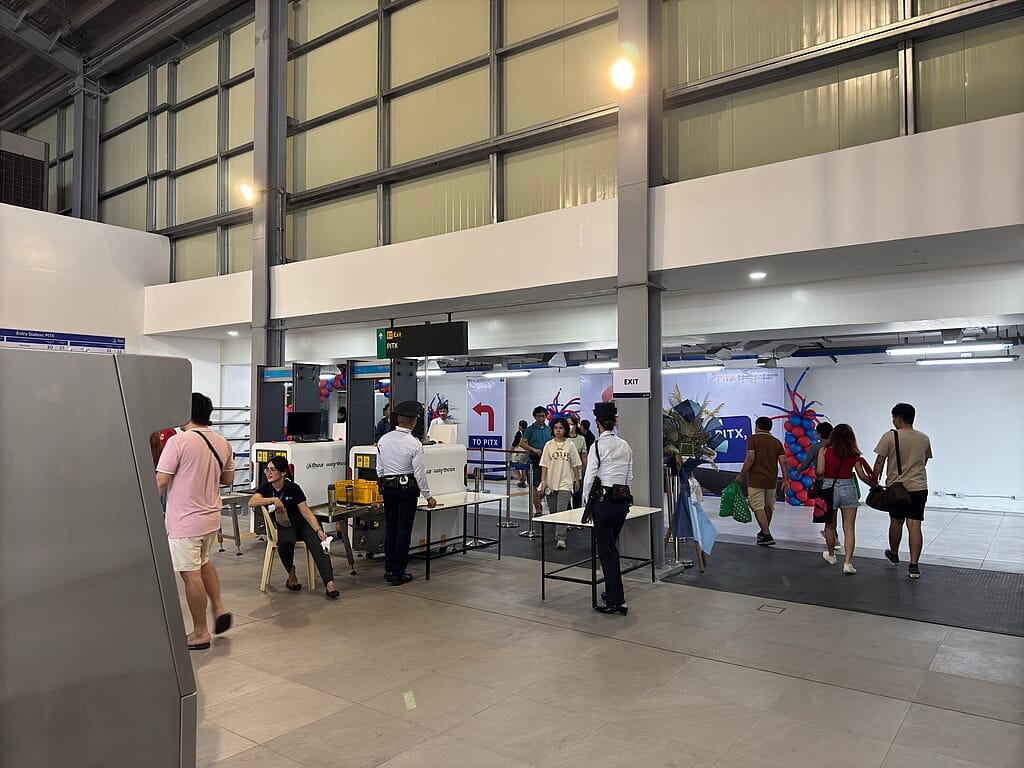
6. Seek accessibility features or assistance
PITX has accessibility features for seniors and persons with disabilities (PWDs), such as ramps and dedicated waiting areas. There are also specialized seats on buses. If you need assistance, don’t hesitate to ask the PITX staff or bus operators—they’re trained to provide support.
7. Check schedules in real time using the PITX app or website
For the most accurate schedule updates, use the PITX mobile app or check the PITX website. They offer real-time information on bus arrivals and departures, so you don’t have to guess whether you’re about to miss your ride.
Most major bus companies, such as DLTB, Jam Liner, and Philtranco, also post updates on their Facebook pages. For more information, you can message them privately or call their hotlines.
8. Plan for transferring transport modes
If you need to connect to another terminal (like NAIA or MRT stations), plan your route ahead of time. PITX is well-connected to other transport hubs, but the trip might take longer than expected, depending on traffic.
You can take public jeepneys or taxis to nearby terminals. For a more comfortable ride, P2P buses are available for destinations like NAIA or Baguio.
Your Smooth Journey Starts Here
With PITX connecting you to Metro Manila, Laguna, and the rest of the Philippines, commuting becomes less of a chore and more of a smooth part of your day. From fare tips to real-time schedules, knowing how to navigate PITX helps you move smarter, especially when your home is within reach of major transport hubs.

That’s where Meadowcrest and Hartwood Village come in. These communities offer more than just a lot for sale in Laguna—they’re designed around accessibility.
Meadowcrest puts you near CALAX, Sugar Road, and Broadfield, with the charm of a 15-minute community and wide open spaces to enjoy. Meanwhile, Hartwood Village offers the perks of elevated living in a peaceful enclave, all while keeping you close to the urban pulse.
Contact us today to discover how these Laguna property offer comfort, mobility, and value.
Article Banner Source: ‘PITX Achieves Milestone of…,’ PITX website.
About the Author

Martin is an experienced marketer with over 16 years of experience across various industries including real estate, banking and finance, technology, and advertising.
Martin has a broad range of expertise in having handled campaigns, brand launches, activations both in the traditional and digital space. Currently serving as the Digital Marketing Head at Federal Land, Martin leads a team focused on managing digital sales and platforms for the residential, estates and commercial business units.
